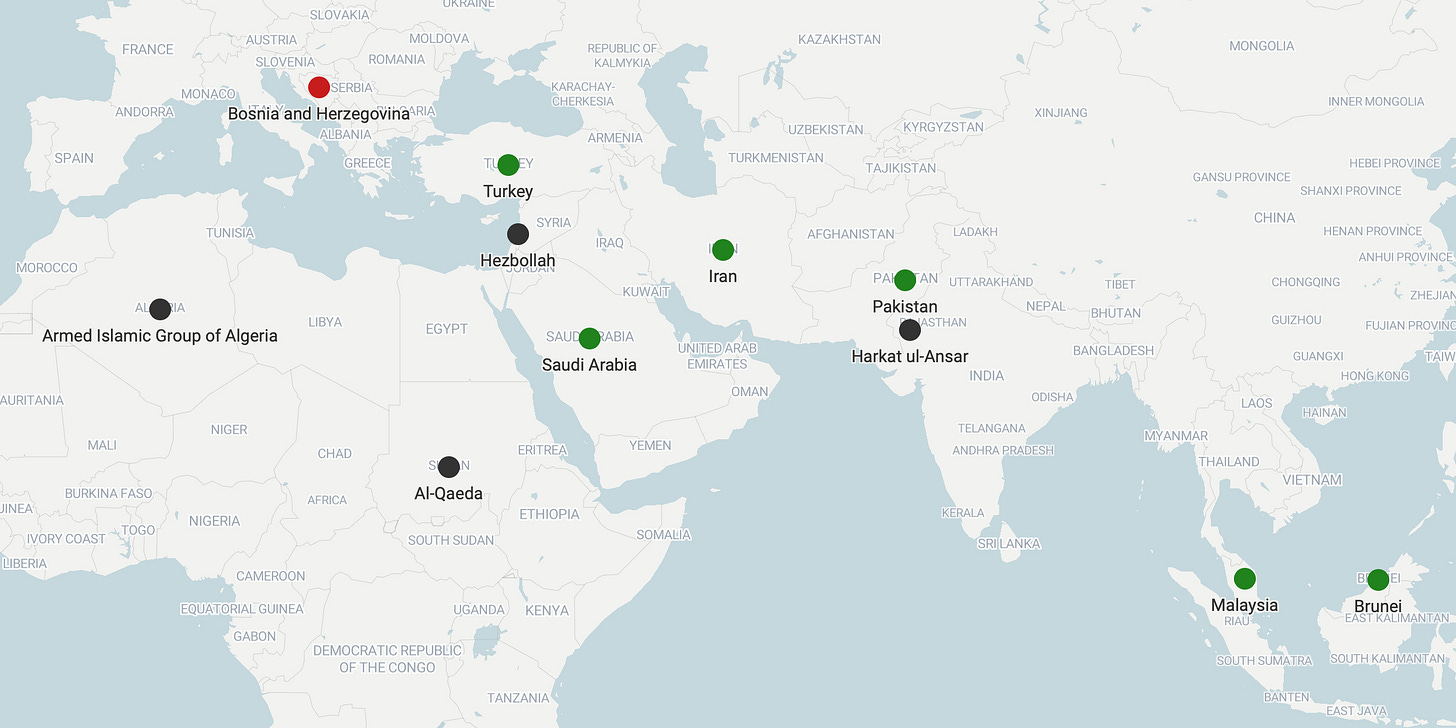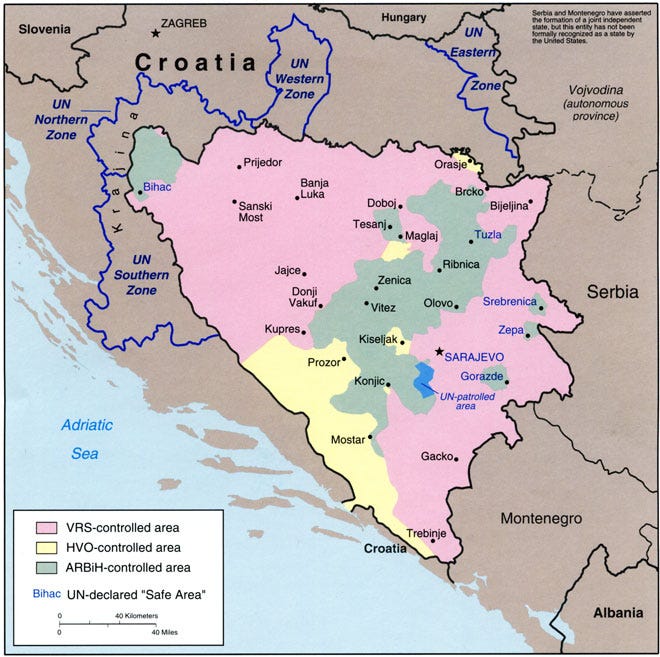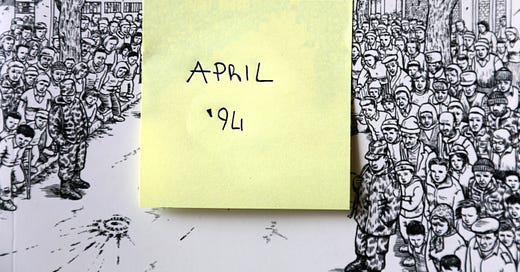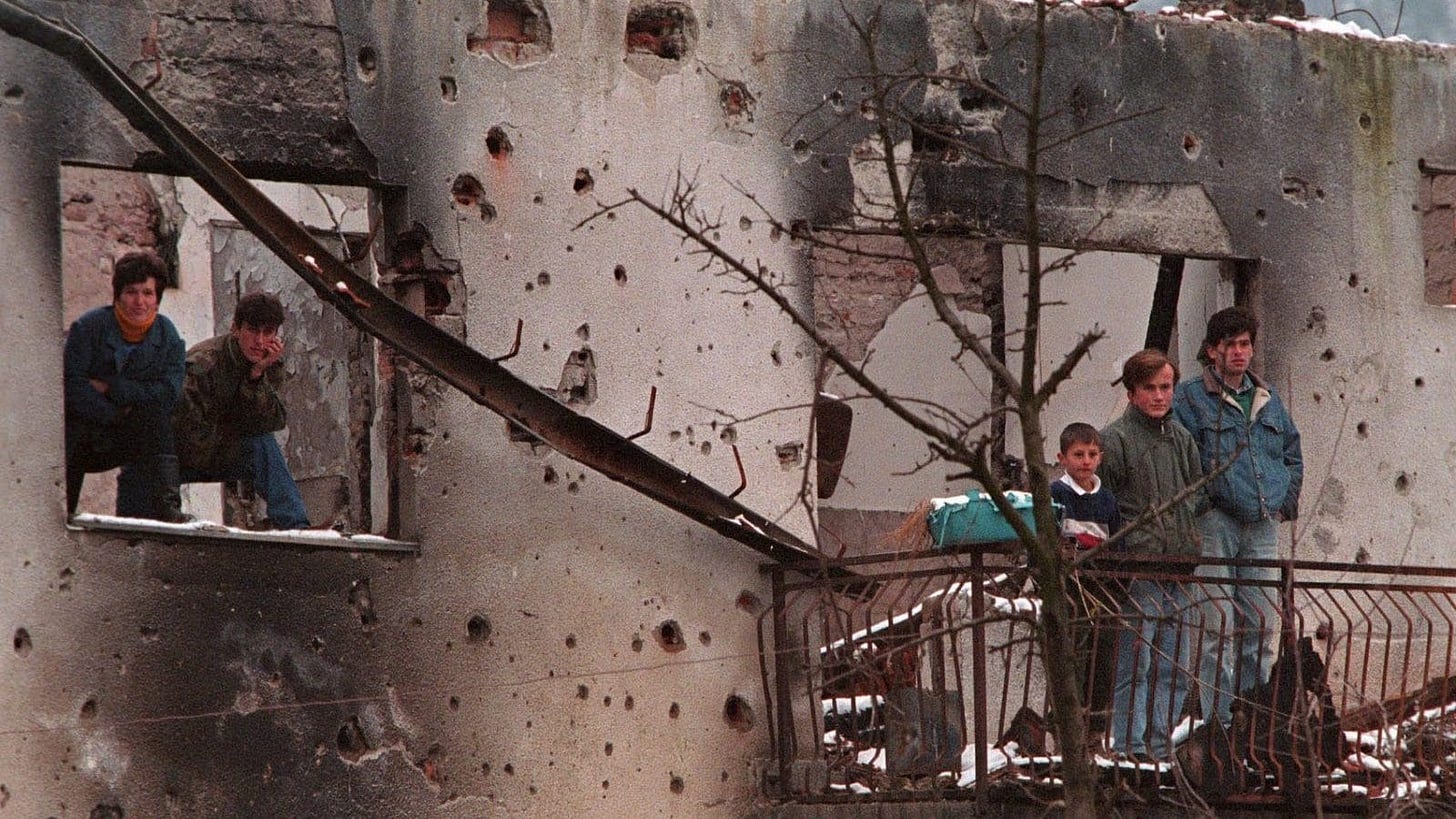April 1994.
For the first time after two years of war in Bosnia and Herzegovina, the peace between Bosnian-Croats and Bosniaks and the creation of the Federation of Bosnia and Herzegovina has given a sort of stabilization to the region [you can listen to the latest episode of BarBalkans - Podcast here].
This does not mean the end of the war in Bosnian territory, because Bosnian-Serbs have no intention of giving up their hegemonic goals.
Despite the critical economic situation, the Yugoslav army (Serbian and Montenegrin armed forces) and the Bosnian Serb army launch a new heavy offensive in the Drina River Valley.
The first Bosniak enclave to be attacked is Goražde, a UN «safe area» weakly defended by the Bosnian army.
The 26 days of Goražde
After the siege of Goražde started on March 30, April begins with a desperate request by the President of the Republic of Bosnia and Herzegovina, Alja Izetbegović, to the UN Special Representative of the Secretary-General, Jasushi Akashi, for sending a contingent of Blue Helmets to protect the town.
The promise to mobilize 800 Ukrainian UNPROFOR soldiers is not honored. More than 100 Serbian tanks can approach and enter the Bosniak enclave in the Drina River Valley.
However, the NATO leadership would be ready to intervene - as in late February - with air strikes against Serb positions, due to the violation of the safe area established by the United Nations.
Only when dozens of villages on the right bank of the Drina River are set on fire and the city of Goražde seems doomed, Akashi decides to rely on the “two-man rule” to activate U.S. F-16 aircraft, without communicating with Russian authorities.
On April 10, three bombs are dropped on the Serbian army. The attack is repeated the following day, provoking a harsh reaction by Bosnian Serbs. The President of Republika Srpska, Radovan Karadžić, defines UNPROFOR as a «potentially enemy force» and on April 14 puts Sarajevo again under siege.
The offensive also continues in Goražde, until the defense line collapses on April 15. As the tanks approach the city center, the dispute between the United Nations and NATO over the possibility of a new attack against Serb positions starts again.
Frictions also open up between the leaders of the United States and Russia, because of the lack of communication during the two previous attacks. The President of Russian Federation, Boris El’cin, threatens to withdraw his soldiers from UNPROFOR in the case of a new order from his U.S. counterpart, Bill Clinton, for air raids in Bosnia.
An emergency session of the North Atlantic Council is convened on April 22, with an ultimatum to the Yugoslav and Bosnian Serb armies (reinforced by UN Security Council Resolution 913).
By 01:00 a.m. April 24, the besiegers must withdraw 3 kilometers from the center of Goražde and guarantee the transit of humanitarian and medical convoys. By 01:00 a.m. April 27, they must withdraw 20 kilometers and this area will be demilitarized, similar to Sarajevo.
In case of non-compliance with the ultimatum, NATO-South Area forces stationed in Naples will bomb Serbian artillery and heavy weapons in the area around Goražde (and, if necessary, also in Žepa, Srebrenica, Tuzla and Bihać in the future).
At the first deadline - even if the ultimatum is not entirely met - Ukrainian and French Blue Helmets enter the city. Two days later, the Bosnian Serb army notifies NATO that the withdrawal from the demilitarized area is completed, after having destroyed houses and power plants.
The most violent attack on Goražde ends on April 26, costing the lives of 716 civilians in 26 days and the reduction of the enclave’s perimeter from 350 to 30 square kilometers. As in the case of Srebrenica, another Bosniak enclave is deprived of weapons for defense and the population locked up in the safe area.
The Iranian arms intrigue
In the midst of the siege of Goražde, an international intrigue takes place among Tehran, Sarajevo, Zagreb and Washington on the issue of Iranian arms supplies to Bosnia and Herzegovina.
On April 7, the Islamic Republic of Iran opens its embassy in Sarajevo, signifying further strengthening relations between the two governments (which are already particularly strong). Alongside the Army of the Republic of Bosnia and Herzegovina, there are hundreds of Iranian Mujahideen and Revolutionary Guards fighting on Bosnian soil.
Particularly after the peace between Croatia and Bosnia and Herzegovina, authorities in Tehran and Sarajevo are keenly interested in increasing the flow of weapons through Croatian territory.
This is how Bosnian President Izetbegović asks the Croatian counterpart, Franjo Tuđman, for his consent to this arms traffic.
Tuđman is now in a very difficult position. Saying ‘no’ would already put the new relationship between Sarajevo and Zagreb at risk. Saying ‘yes’ would risk upsetting the United States, which has long considered Iran a “sponsor of international terrorism”.
After weeks of confrontation, U.S. President Clinton himself takes the most elusive decision. He orders the U.S. ambassador to Croatia, Peter Galbraith, to inform President Tuđman that he has received no instructions from Washington.
However Galbraith points out to the Croatian President «not only what he has been told, but also what he has not been told». Leaving room to an unspoken and secret consent by Washington to the transit of Iranian weapons to Sarajevo.
The decision is so secret that even the Central Intelligence Agency (CIA) and the Pentagon are unaware of it. To the point that U.S. spies in the Balkans suspect compatriot diplomats of double-crossing the White House.

The birth of the Contact Group
Meanwhile, international diplomatic services continue to look for a plan to put an end to wars in the Balkan region.
As a follow-up to the late February proposal by Russian President El’cin to draft a document of «historic significance», a new Contact Group is inaugurated on April 21. Its aim is to seek preliminary agreement on peace to be imposed at a later stage on the warring parties.
This Contact Group includes the United States, Russia, United Kingdom, France and Germany - without the United Nations and the European Union - and it is expected to accelerate the Bosnia and Herzegovina peace process.
Inevitably, the Contact Group unleashes the jealousies of those excluded. UN Secretary General Boutros Boutros-Ghali, Spain, the Netherlands and especially Italy, which refuses the CIA a new military base for spy drones to be sent to Bosnia and Herzegovina.
Despite the tensions, the Contact Group meets for the first time in London on April 26, initiating coordination among British, French and German diplomats, then with U.S. and finally with Russian diplomats.
The first goal is a truce between the warring parties in Bosnia and Herzegovina, prior to the definitive solution.
However, even the Bosniaks show no willingness for peace negotiations. After the end of clashes with Bosnian Croats, troops disengaged from Central Bosnia go on the counterattack with Iranian weapons to break the Brčko Serb corridor between Northern and Eastern Bosnia.

The support of readers who every day gives strength to this project - reading and sharing our articles - is essential to realize all that you have read and listened to, and even more.
If you know someone who can be interested in The Yugoslav Wars podcast, why not give them a gift subscription?
Behind every original product comes an investment of time, energy and dedication. With your support BarBalkans will be able to elaborate new ideas, interviews and collaborations.
Here is the archive of The Yugoslav Wars:
Here you can find a summary of the past years:
















Share this post